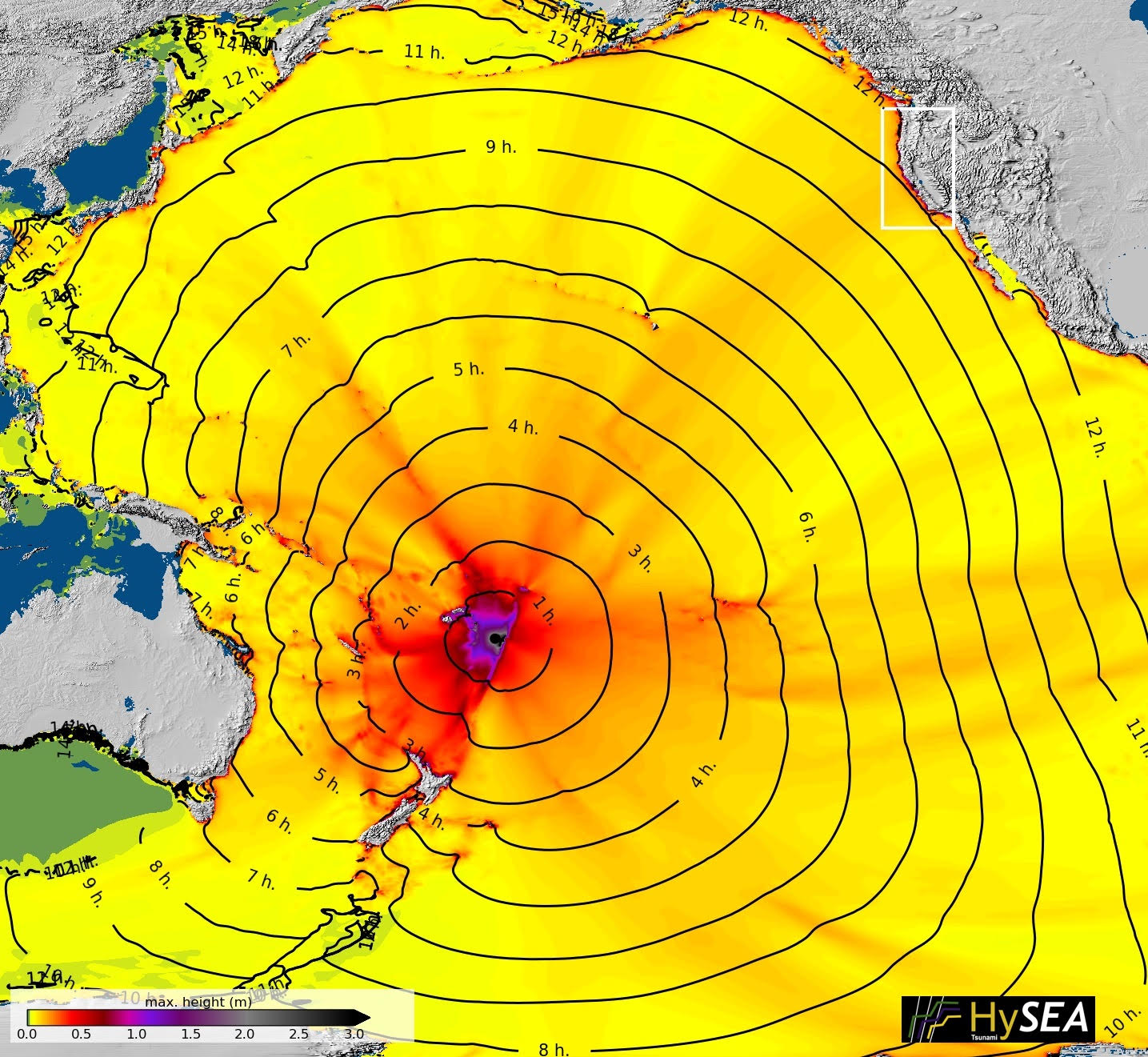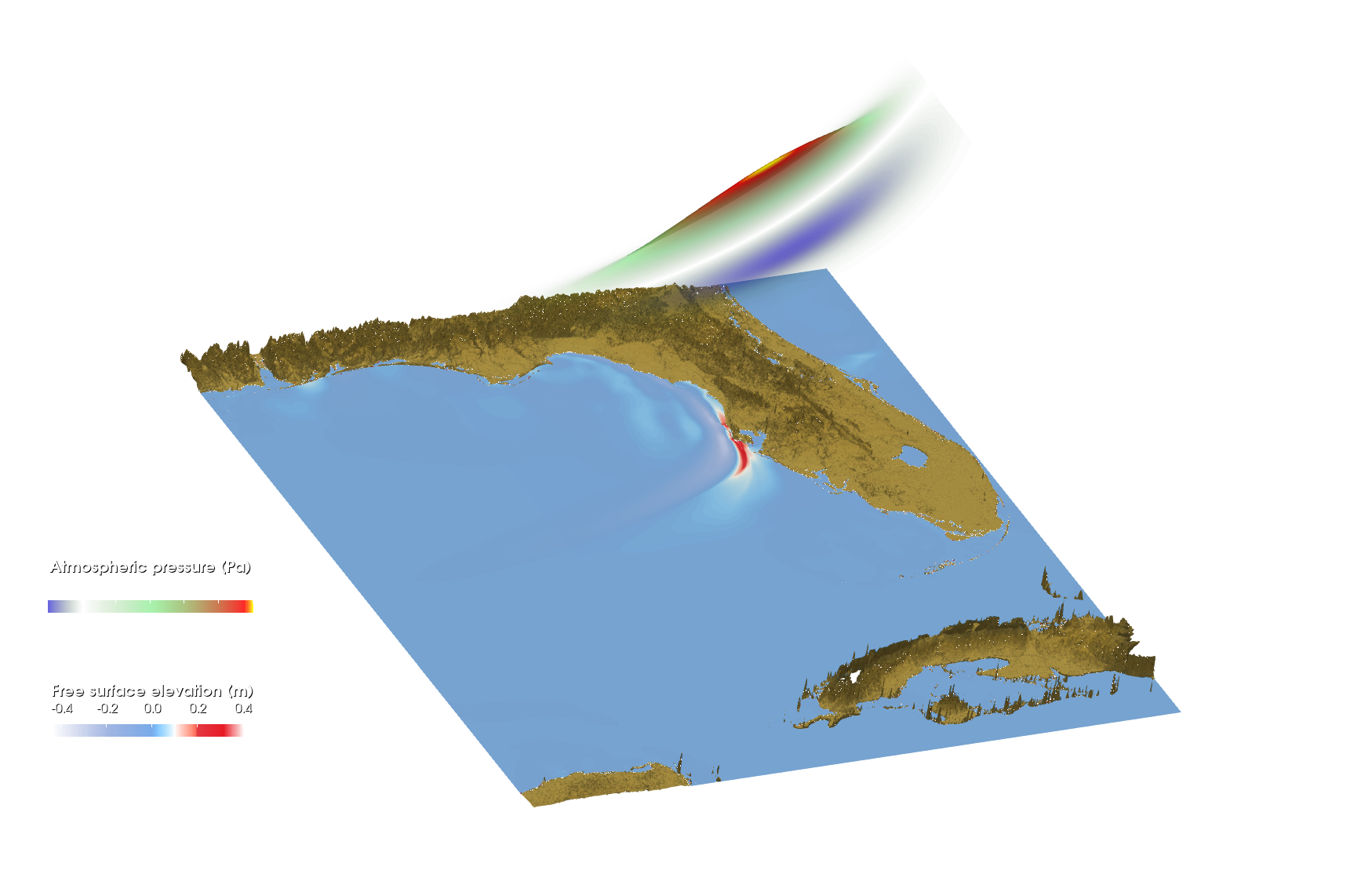ChEESE-2P
 | The scientific ambition of ChEESE-2P is to prepare 11 community flagship codes to address 12 domain-specific Exascale Computational Challenges (ECC), enlarging the areas covered during the first implementation phase (computational seismology, magnetohydrodynamics, physical volcanology, and tsunamis) with two additional disciplines (geodynamics and modeling of glacier hazards). |
Codes will be optimized in terms of performance on different types of accelerators, scalability, deployment, containerization, and portability across current pre-exascale systems and hardware architectures emerging from the EuroHPC Pilots by co-designing with mini-apps. Optimization will also include heterogeneous single-node and multi-node performance, as well as continuous efficiency monitoring using the Performance Optimisation and Productivity (POP) metrics. Emphasis will be given on the uptake by science, public administration and industry, including training and capacity building in cooperation with National Competence Centers (NCCs). Codes and workflows will combine to farm a new generation of 9 Pilot Demonstrators (PDs) underpinned by concepts like multi-scale, multi-source, and multi-physics. The PDs will materialise in 15 Simulation Cases (SCs) representing capability and capacity use cases of particular relevance in terms of science, social relevance, or urgency (the capability SCs include 4 potential Scientific Grand Challenges, i.e. cases that can require an extreme-scale access mode). The SCs will produce relevant EOSC-enabled datasets and enable services on aspects of geohazards like urgent computing, early warning forecast, hazard assessment, or fostering an emergency access mode in EuroHPC tier-0/tier-1 systems for geohazardous events (earthquakes, tsunamis and volcanoes), including access policy recommendations. Finally, ChEESE-2P will liaise, align, and synergize with other domain-specific European projects and longer-term mission-like initiatives like Destination Earth. | |
The second implementation phase of the ChEESE Center of Excellence (CoE) has 4 high-level general objectives and 14 specific objectives related to scientific, technical, and socio-economic challenges. The 4 general objectives are:
| |
Link to ChEESE-2P website
ChEESE-2P - Centre of Excellence for Exascale in Solid Earth - Second phase
- Grant agreement: Nº 101093038 (HORIZON-EUROHPC-JU-2021-COE-01)
- Funding institution: European Commission - European High Performance Computing Joint Undertaking (JU)
- Participanting institutions: INGV - SNGI - IPGP - VI - BS - TUM - CINECA - BSC-CNS - ETHZ - UMA - US - LMU - CNRS
- Duration from: 01/01/2023 to 31/12/2026
- Funding: 7,690,590€
- Coordinator: Arnau Folch (CSIC) - PI UMA: Jorge Macías Sánchez
- Web page: https://cheese2.eu/
What does EDANYA group do in ChEESE-2P?
The EDANYA group provides ChEESE project with two flagship codes in the framework of simulation of tsunamis: Tsunami-HySEA and Meteo-HySEA. Specifically, the group contributions are:
(1) Delivering a new operational version of the dispersive Tsunami-HySEA code (one-layer for earthquake-generated tsunamis) with nested domains.
(2) Implementing a new version of the Tsunami-HySEA code designed to model tsunamis generated by atmospheric disturbances, known as meteotsunamis. This version is referred to as the Meteo-HySEA code.
(3) Providing multi-GPU-optimized implementations of these new codes.
The role of EDANYA group within the project spans all WPs (Work Packages), with contributions to many tasks, particularly:
- WP1: Project management (2 PM) – Tasks 1.1 to 1.5
- WP2: Exascale technical challenges in flagship codes (12 PM) – Tasks 2.1 to 2.4
- WP3: Co-design with European HPC vendors and technologies (6 PM) – Tasks 3.1 (mini-HySEA) to 3.3
- WP4: Simulation ecosystem (6 PM) – Tasks 4.2 and 4.3
- WP5: Farming pilot demonstrators (18 PM) – Tasks 5.1 (Task 5.1.6, HySEA) and 5.2
- WP6: SCs and service enabling using EuroHPC infrastructures (12 PM) – Tasks 6.1 to 6.3
- WP7: Dissemination, outreach, and capacity building (2 PM) – Tasks 7.1, 7.3, 7.4, and 7.6
Leading Deliverables:
- WP5: Farming pilot demonstrators - Deliverable 5.8: Demonstrator of PD3 (M36)
- WP6: SCs and service enabling using EuroHPC infrastructures - Deliverable 6.4: SCs report and dataset from PD3 (M46)
Pilot Demostrators:
- PD3: Global probabilistic tsunami hazard and uncertainty quantification (SC3.1) - INGV / UMA, NGI, TUM, LMU
- PD4: Complex multi-source tsunami modeling (SC4.1) - NGI / UMA, INGV, TUM, LMU, CNRS, RBI, UM
Simulation Cases:
- SC3.1: The global tsunami hazard map - INGV, UMA, NGI, TUM
- SC4.1: Multi-source local high-resolution scenario with emphasis on the 2022 Tonga case - NGI / TUM, INGV, UMA, LMU, RBI, CNRS
Galery:
| Max height and arrival time in Tonga 2022 simulation | Simulation of a real meteotsunami event in the Gulf of Mexico in 2010 |
Funded acknowledgement: European Union - European High Performance Computing Joint Undertaking (JU) and Spain, Italy, Iceland, Germany, Norway, France, Finland and Croatia under grant agreement No 101093038.
Short version: EU-EuroHPC JU-101093038





